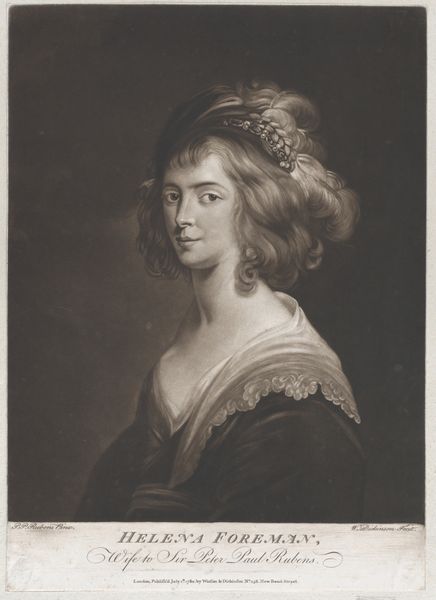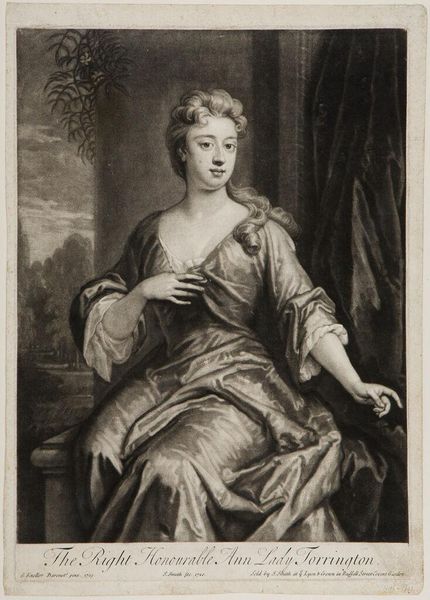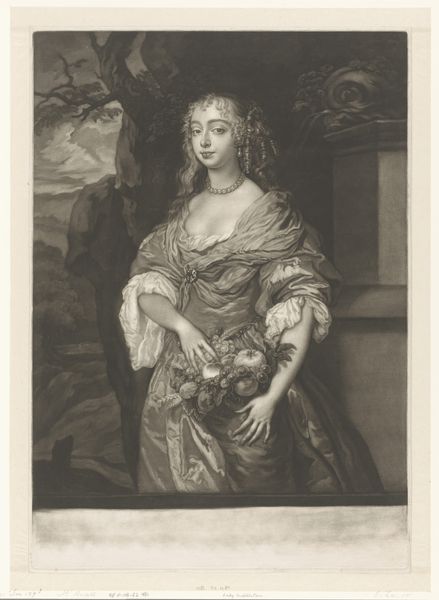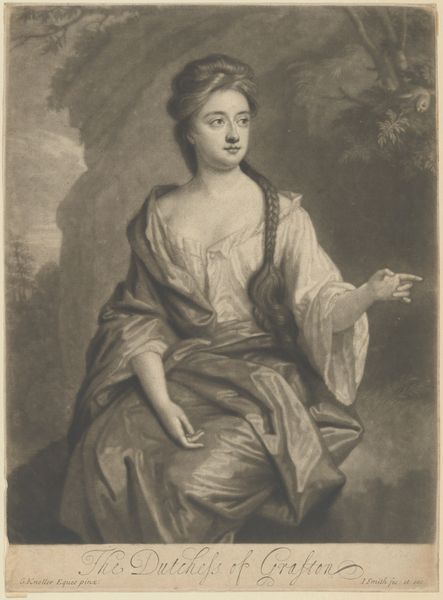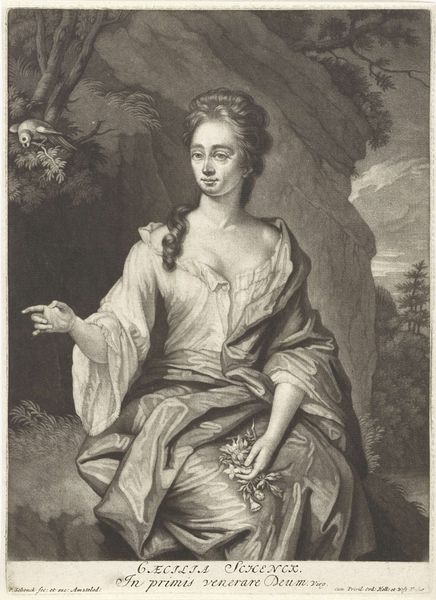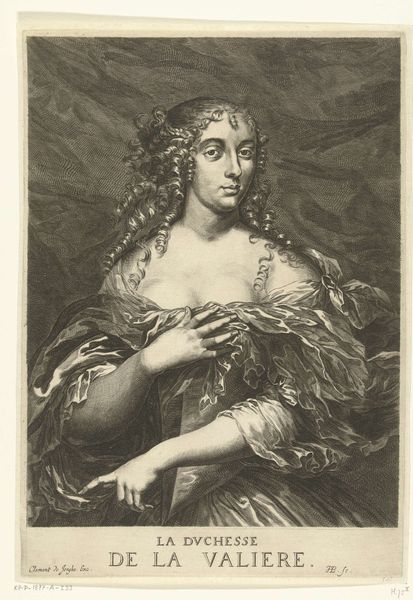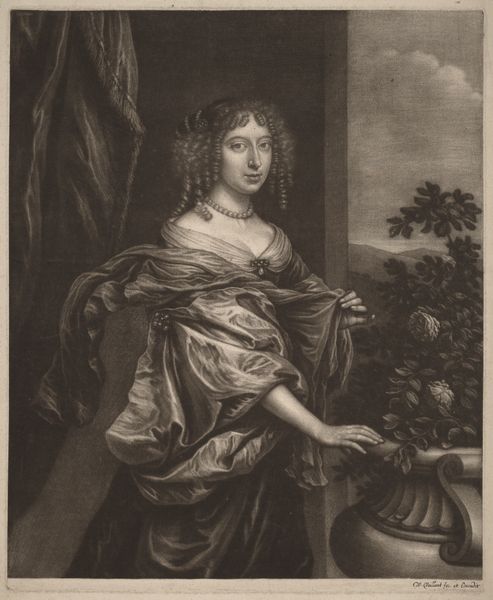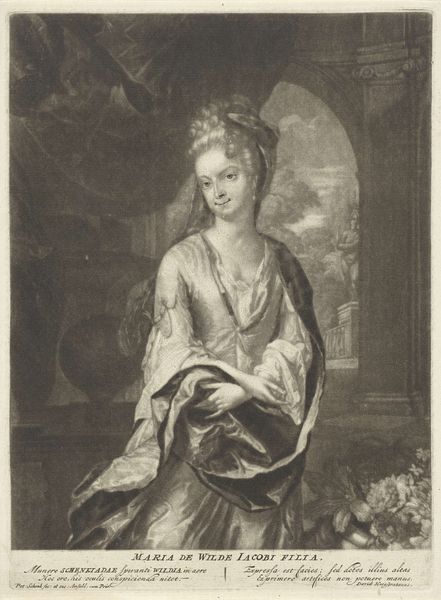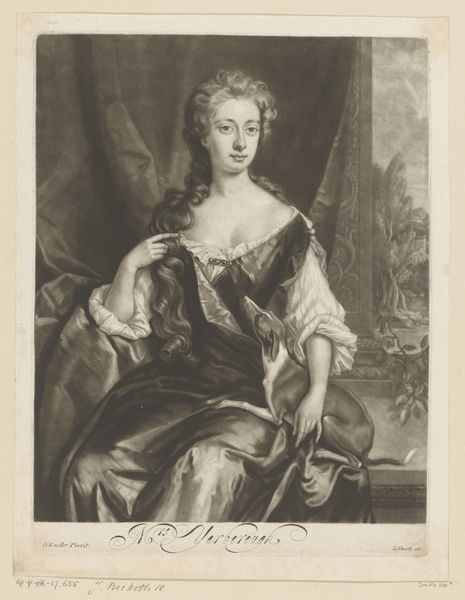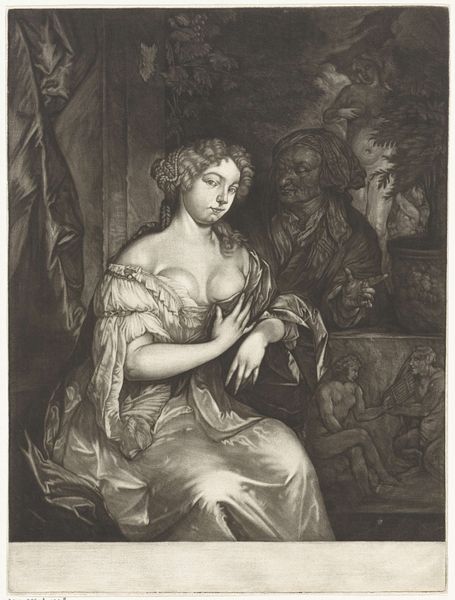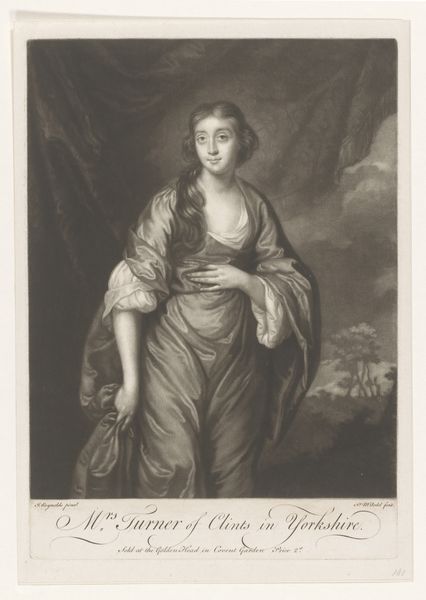
painting, oil-paint
#
portrait
#
baroque
#
painting
#
oil-paint
#
intimism
#
genre-painting
#
history-painting
Copyright: Public domain
Editor: This is "Portrait of Mary Ruthven, wife of the artist," an oil painting by Anthony van Dyck, created in 1640. It strikes me as an incredibly intimate portrayal, not just a formal portrait, but something softer. How do you see this piece? Curator: Van Dyck operated in a courtly milieu, shaping perceptions of aristocracy. Consider how this portrait presents his wife within that context. Is this merely a demonstration of personal affection, or does it perform a specific function within the theatre of nobility? Editor: I hadn't thought of it that way. The cello and bow imply she’s musical, and that seems to point toward cultivated gentility. Curator: Exactly! Think about the socio-political function of portraying a woman with artistic talent. In Van Dyck's time, such portraits reinforced the image of a refined, cultured court. How does the inclusion of the cello situate Mary Ruthven within the context of noble leisure and artistic patronage? It’s also interesting to consider the potential power dynamics here, with the artist, a man, portraying his wife for public consumption. Editor: That’s a perspective shift! I see her agency less, and his more, now. Do you think audiences understood the artistic and social implications back then as readily as we try to understand them now? Curator: Absolutely. Portraiture was a language everyone understood, communicating status, power, and allegiances. The subtleties might be lost to us now, but contemporary viewers were acutely aware of these visual cues. The artist’s objective wasn’t just to mirror the subject, but to elevate and interpret their status for their peers. Editor: I’m finding that art can simultaneously conceal and reveal many social contexts. Curator: Precisely. It's a potent visual record of how individuals and institutions wished to be seen, performing for the ages. Thank you, it was interesting seeing it anew through your perspective.
Comments
No comments
Be the first to comment and join the conversation on the ultimate creative platform.

